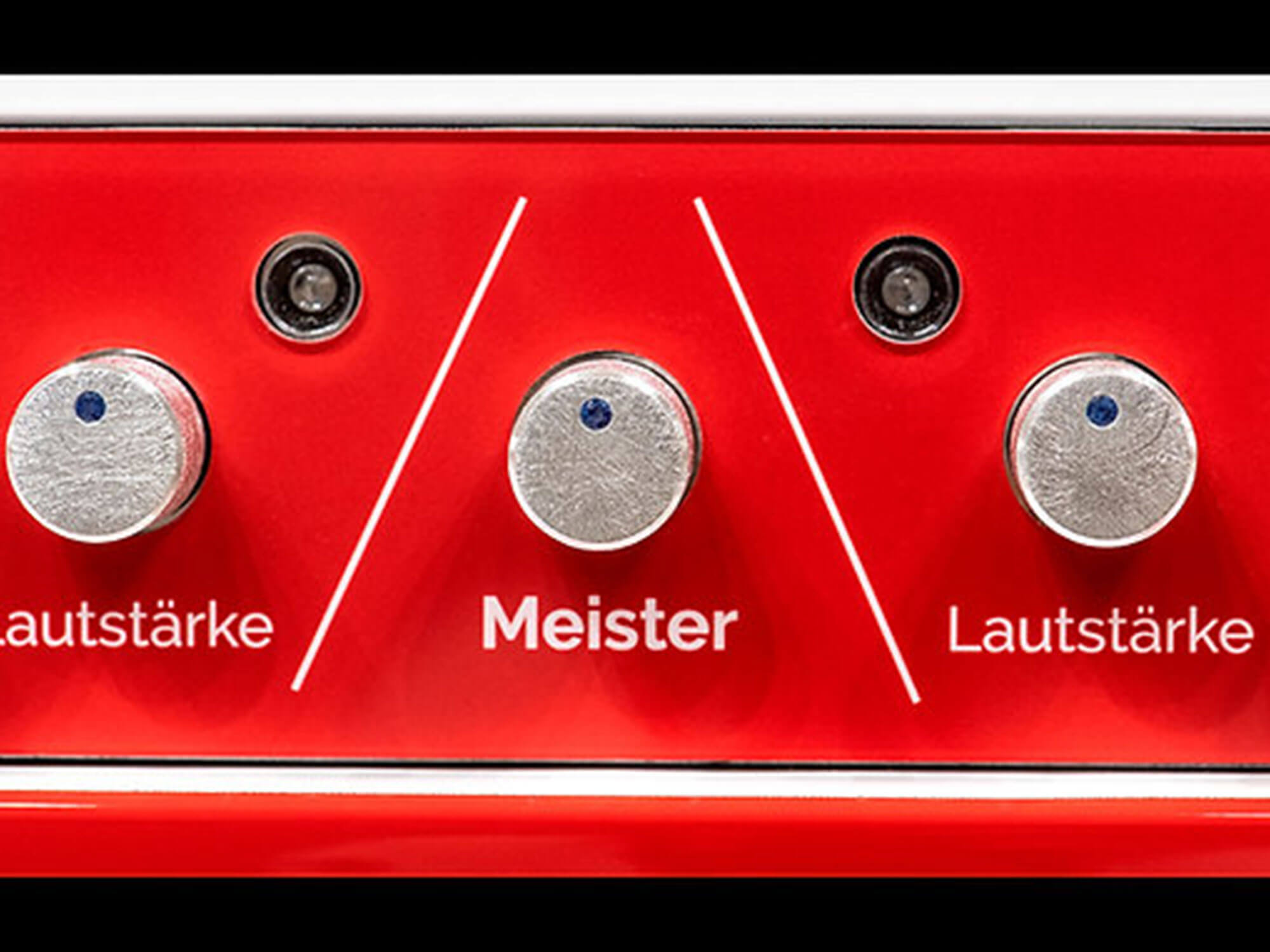Conventional is probably the last word one would use to describe Jen Ritter’s new Encore tube amplifier. Quite the opposite, the German luthier’s latest creation — a beacon of artistry, he says — is here to shake up everything you’ve ever known about guitar amps.
To start, the Encore no doubt looks like it belongs in a museum more so than in a studio or on stage. The amp’s wave-like, diner sign-looking shape, coupled with its glossy red-white finish is reminiscent of ’50s and ’60s futurism, and embodies what the brand calls the “emotional design vibes of an era that revolutionised music and culture.”
Design isn’t the only thing that’s out of this world when it comes to the Encore. Equally dizzying is the amp’s eye-watering $40,000 price tag, which gets you some really cool (and bougie) features like hand-selected tubes encased in 18-karat white gold covers, and ice-frosted, white gold-coated control knobs set with blue sapphires.

Each unit is also equipped with a polished stainless steel chassis with laser engravings of famous guitar players’ names, as well as yours if you so desire.
Under its hood, Encore features a meticulously handwired, point-to-point construction, and delivers up to 58 watts of power. The two-channel amp is also said to be tonally inspired by Ritter’s favourite amplifiers: the Fender Bassman and the Dumble Classic.
With the Encore, you’ll get two clean channels on tap (each with its own three-band EQ), advanced tone shaping controls, a serial effects loop, selectable mains voltage and flexible speaker impedance. The amp also uses two different 12-inch speakers: a Jensen loudspeaker in an open-back design for a warmer, more resonant sound, and an Electro-Voice loudspeaker housed in a bass reflex system, delivering punchy and tight low frequencies.
To top things off, each unit is delivered in a custom-made flight case, complete with “state-of-the-art” speaker cables and a power cord. And with only three units produced annually, each one taking up to seven months to build, you’d be sure of the amp’s exclusivity.
Source: Guitar.com







